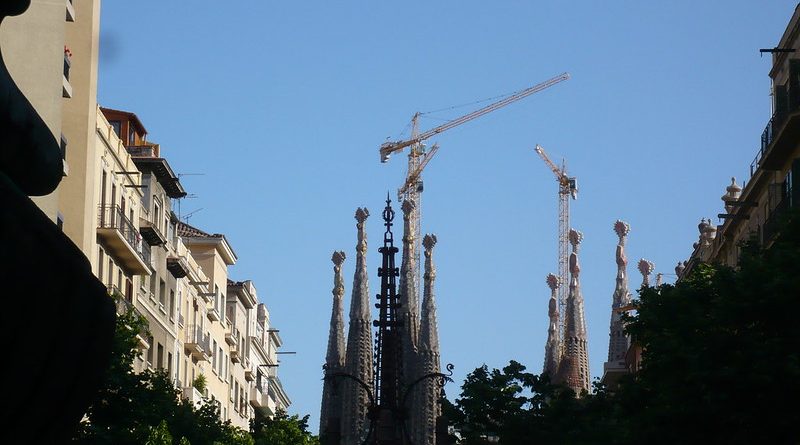Barcelona City Guide
Barcelona sits between the city and the sea, bordered by two rivers – the Besos and the Llobregat. An arc of steep hills stretching southwest from the Montjuic mountains to the Collserola slopes surrounds it.
The city is divided into a series of neighbourhoods, starting with the old city and Barri Gotic, and growing outwards to include El Raval, Ribera, Gracia, Sant Just, Sant Pere and Horta.
Barcelona has a population of 1.6 million people and declares itself as being proudly Catalan, part of an autonomous region of Spain.
We will be exploring the city’s main landmarks and taking a day trip out of the city – to the fishing village of Cadaques.
MUST SEE & DO…
- Visit the party town of Sitges.
- Have a walk down Las Ramblas. It’s touristy by still a must.
- Visit the atmospheric square of Sant Felip Neri.
- Get lost in the narrow streets of the Gothic quarter.
- Feel the infamous Tramontana wind and enjoy the rugged landscape of Cap the Creus Natural Park.
- Follow on the footsteps of Dali and visit the charming little village of Cadaques.
- Immerse yourself in Gaudi’s undulating world.
- Visit Modernista buildings by less known architects. The Palau de la Musica Catalana is a must.
- Do some food shopping in one of the city’s many food markets. Check out the Santa Caterina market which has been recently renovated.
TRAVEL
When to Go:
Any time of year is good. Winters are never too cold and summers are hot. You may want to avoid July and August when the city gets packed with tourists.
GETTING THERE
By air
Barcelona’s Aeroport del Prat is 12 kilometres south of the city.
Aerobus – This special bus service is usually the most convenient way of getting to central Barcelona. Buses run from stops outside each terminal to Placa Catalunya. Buses leave the airport every 15 minutes.
There is also a train service that can take you to and from the airport.
By bus
Most long distance coaches stop or terminate at Estacio de Autobusos Barcelona-Nord.
By train
Barcelona Sants station is the stop or terminus for most long distance trains run by Spanish state railways, RENFE.
LOCAL TRANSPORT
The metro is generally the cheapest, quickest and most convenient way of getting around the city, although buses give you a view and operate all night. Local buses and metro are run by the city transport authority, TMB.
PRACTICAL INFO
- Population:1,615,908 and they are proudly Catalan, part of an autonomous region of Spain!
- Currency:Like in the rest of Spain, the currency in Barcelona is the Euro, (€).
- LanguageEnglish, Spanish and Catalan.
SLEEP
Hostel Levante
www.hostallevante.com
Baixada de Sant Miquel 2
08002 Barcelona, Spain
+34 933 179 565
Hostel Levante is discovered along the winding narrow passages of the medieval Barrio Gotic.
It started life as publisher’s in 1834, then it became Barcelona’s first telecommunications tower and somehow proceeded to turn into a disreputable brothel with some interesting clienteles.
Picasso used to hang out there and it’s here, where Picasso gets his inspiration for “Les Demoiselles D’Avingon” – the well spring of modern art.
Today it’s an affordable place visited by bohemians and students. Rooms start from 65 euros a night in the centre of town.
EAT & DRINK
From small, affordable neighbourhood joints to world renowned shrines to the art of dining, Barcelona’s restaurant scene is rich and varied.
There are four basic elements that form the basis of many Catalan dishes: sofregit, tomato and onion sautéed together in olive oil until soft. Samfaina, a rather ratatouille like mixture of aubergine, garlic, onion, red and green peppers and tomatoes which usually accompanies grilled fish and meats.
The fabulous picada, the ingredients of which depend upon which dish it will be used to enrich and thicken, but usually contains nuts, garlic, parsley, bread, and ham, all mashed up with mortar and pestle. Last is all i oli, garlic mayonnaise served with meat and seafood, best made solely with raw, crushed garlic and olive oil.
Catalans like their country classics – pork, sausages, lamb and rabbit.
ADVICE
- If you are in Las Ramblas, take a break and pop into the Mercado de la Boqueria. There is a great ‘tapas’ place called Pinotxo where you can try fantastic Catalan dishes. Also worth a visit is the Santa Caterina market.
- Never eat in any of the restaurant along Las Ramblas. It’s expensive and not that good.
- Careful if you decide to eat tapas. It can end up being quite costly. Ask for a menu where you can see the prices. If they haven’t got one, check the price of each dish you order. Your can also order half portions.
- Try some cava. It’s produced in Catalunya and you can find some fantastic ones.
USEFUL WEBSITES:
- www.hostallevante.com
- www.biciclot.net
- www.gaysitgesguide.com
- www.ladydiamondsitges.com
- www.fundaciomiro-bcn.org
- www.museupicasso.bcn.es
- www.salvador-dali.org
- CATALAN TOURIST BOARD BARCELONA CATALUNYA FILM COMMISSION
- INSTITUT MUNICIPAL DE MERCATS
- FUNDACIÓ INSTITUT CATALÀ DE LA CUINA
USEFUL BOOKS:
- Time Out Barcelona
- Lonely Planet Barcelona
- Gaudi: A Biography by Gijs van Hensbergen
- Gaudi: An Introduction to His Architecture by J.E. Cirlot




